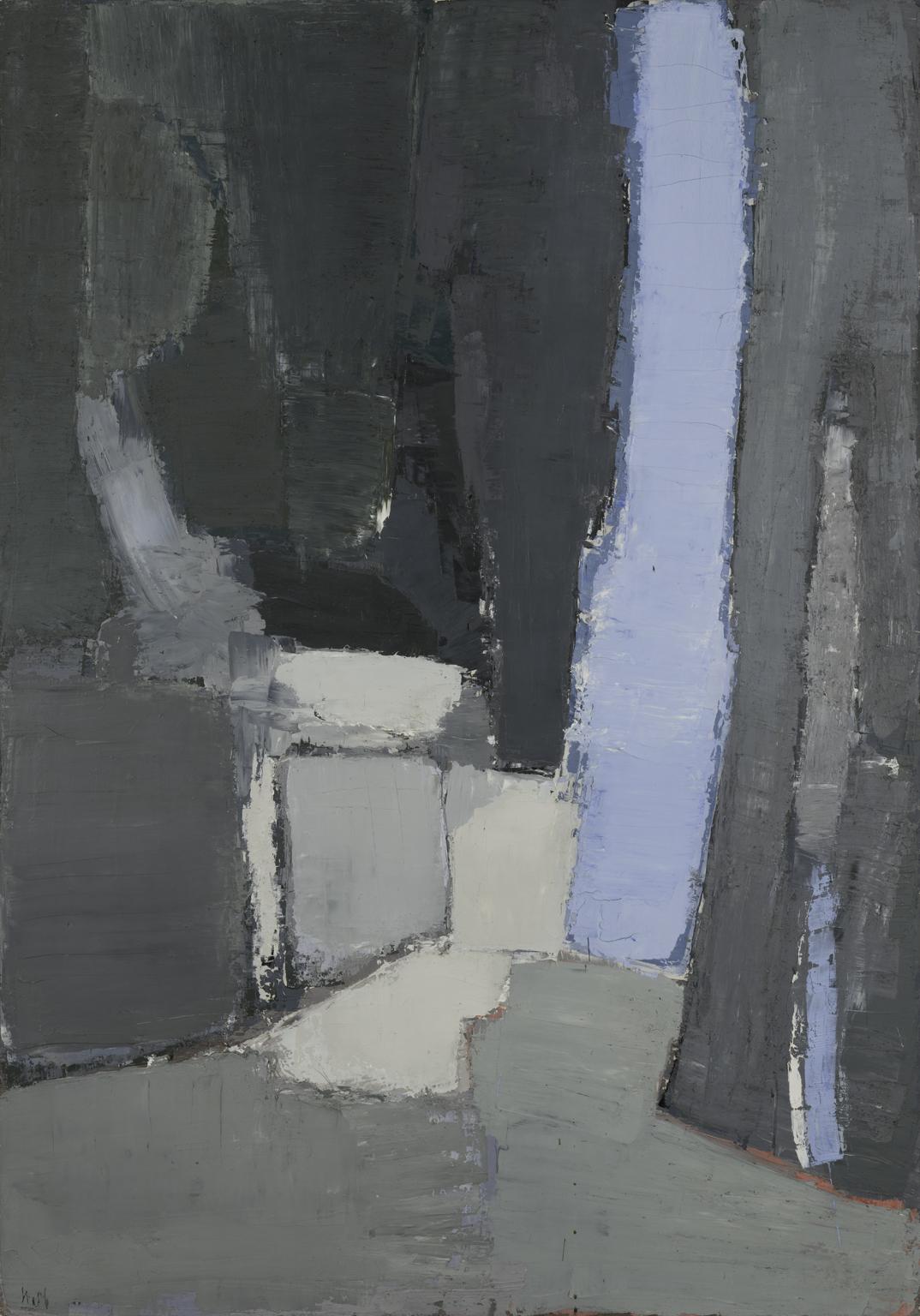Le Parc de Sceaux
Nicolas de Staël ( 1952 )

In 1950, de Staël, who fervently maintained that “[w]e are continually influenced and penetrated by nature,” was deeply affected by the soft light of London (which he visited in July), as well as the wide-open sky above the English countryside. This visual shock, coupled with his visit to the Netherlands the previous year, further provoked his desire for a closer relationship between nature and the rhythms of color and form, a dialogue that is embraced in two contrasting works in the collection, Nocturne and Le Parc de Sceaux. “By starting with his own experience, and through the very act of creating the painting,” wrote the critic Roger van Gindertaël, “de Staël strives to abolish the distinction between the natural phenomena which inspired its creation and the finished work itself.”
In contrast to Nocturne’s subtle color harmonies, Le Parc de Sceaux of just two years later is a study of subtle variations of a single color – gray – a palette that characterizes much of de Staël’s work between 1951 and 1952. Although he painted many landscapes at this time, this work differs from most in that de Staël usually favored a horizontal format to better emphasize the wide sky, the result of his attraction just two years earlier to the English landscape artists Bonington, Turner, and Constable. But Le Parc de Sceaux has a strong, vertical design, a format that is repeated even more dramatically in two other canvases of 1952.
In mid-1952, de Staël had begun to paint directly from nature, and would leave his home each day with his artist’s materials. For this composition, he painted the public gardens of Parc de Sceaux, just south of Paris. By gradually building up the oil – layer upon layer of large, interlocking rectangular and vertical planes of resonating grays that are offset by the sky-blue vertical plane to the right and areas of white in the center – de Staël evoked trees towering over a clearing; patches of white suggest a small sunlit area and a vertical shaft of blue resonates as the sky overhead. In the lower half, which alludes to the ground, a cool-red underlayer is glimpsed around edges of large gray blocks denoting the bases of the trees. Le Parc de Sceaux recalls Lecuire’s poetic description of de Staël’s palette: “His greys. There would be no light in this painting, no atmosphere, no transparency, the eye would be burned in cement, no air would circulate, there would be no possible happiness without these famous greys. These greys are unique in all contemporary painting. Unique in subtlety, in variety, unique in substance, in depth, unique for the multiplicity of combinations into which the painter combines them.”